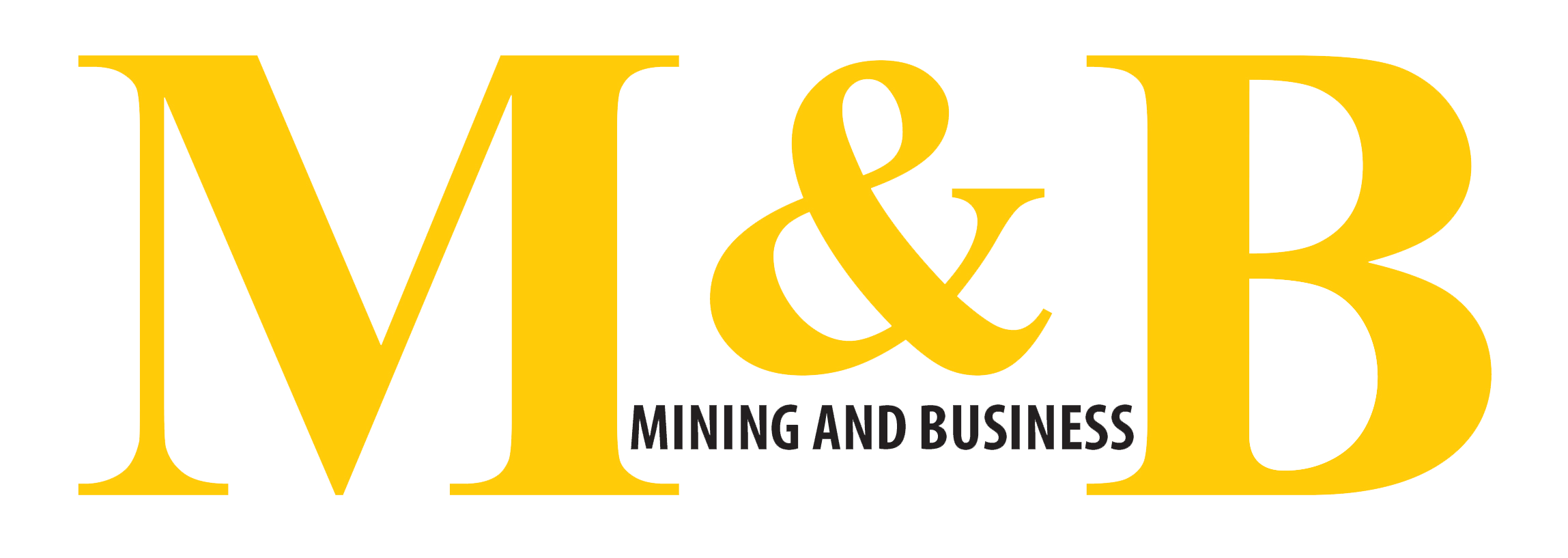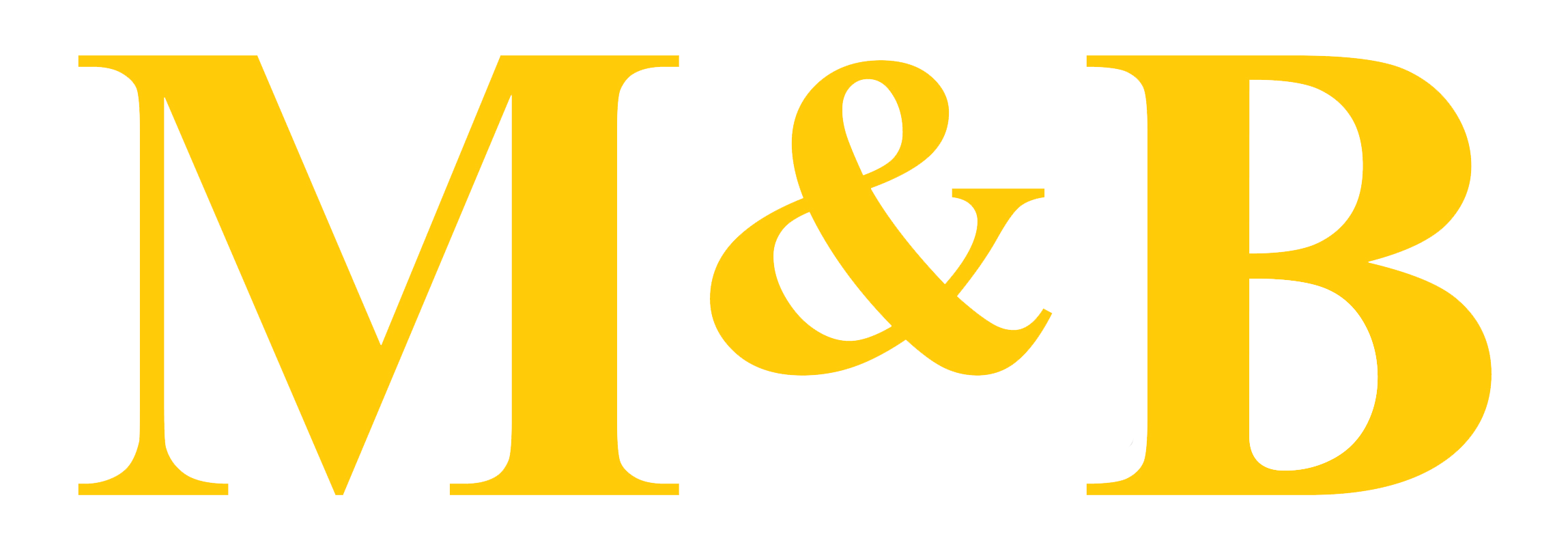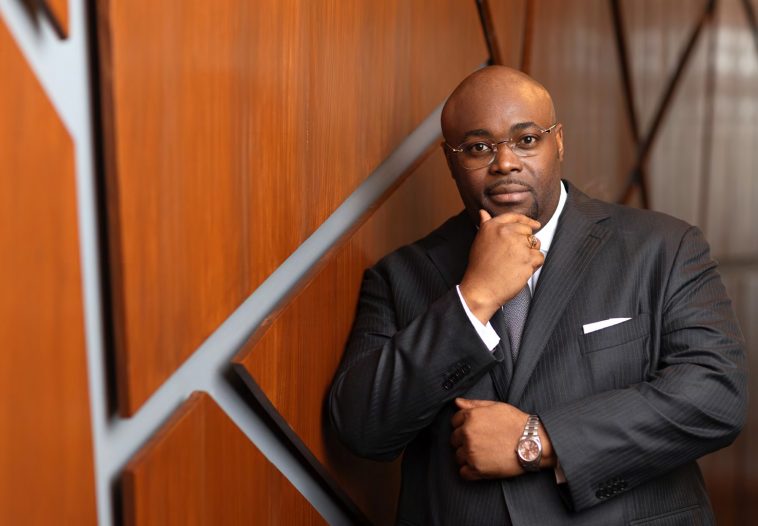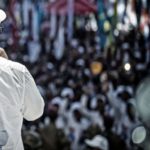Better redistribution of wealth, is one of the many challenges facing Entreprise Générale du Cobalt.
Better redistribution of wealth, is one of the many challenges facing Entreprise Générale du Cobalt. M&B spoke with Éric Kalala, appointed to head EGC by President Tshisekedi Tshisekedi in August 2023. With this appointment, the Congolese President hopes to breathe new life the Gécamines subsidiary, which has been somewhat neglected since its its creation in 2019.
Éric Kalala, could you introduce yourself ?
I’m the Managing Director of Entreprise Générale du Cobalt. For the past 6 months of this new project. But in fact, I have over 20 years experience in logistics with Bolloré Transport & Logistics RDC now AGL RDC. My background is in corporate finance and international trade.
International Trade, and previously held the position of Chairman and of AGL RDC sa, which is active in mining logistics, among other things.
logistics. In a completely different field, I was also Chairman of GVA RDC and thus the launch of Canal box in the DRC through the deployment of fiber to HTTX households.
In a few words, tell us about Entreprise Générale du Cobalt?
It’s all about cobalt. Established on the basis of Prime Ministerial Decree 19/15 of November 5, 2019, EGC is the state-owned company in the DRC in charge of managing strategic minerals of artisanal origin. Under Congolese law, there are three strategic minerals: germanium, which is not produced artisanally in the DRC, coltan and cobalt. EGC is the only state-owned company headquartered in Kolwezi, capital of Lualaba and cobalt capital of the world.
What changes have there been in the company since you took over?
The biggest change has been the introduction of a new management team and a new Board of Directors. EGC is a state-owned company, but the Board of Directors has brought together a wide range of skills from different sectors: banking and insurance, trading, corporate lawyers, business climate, as well as highly technical professions. The Government of the Republic wanted to bring in expertise from the private sector and from all directions to shape this project, which is of prime importance for the country.
Let’s talk about world prices. What is the price of cobalt today, and what is the medium-term trend?
Cobalt prices are fairly low, at around $28,700 per tonne at the moment, whereas we’ve just come from much higher levels. In fact, we were as high as $95,000 a tonne in 2018. In this respect, I would like to remind you of the speech made by the President of the Republic at the Council of Ministers meeting on August 25, 2023. He stated that prices were abnormally low and that we had to act to better control the commodity, but also to better redistribute the wealth generated by the extraction of our cobalt and ores. These important resources are exhaustible.
According to independent sources, 80% of today’s known cobalt resources will be consumed by 2050. Are we heading for a shortage?
At this stage, I think it’s too early to say, as there will be more and more recycled cobalt and new producers like Indonesia in association with nickel. What’s more, there will be several technological alternatives, so the reserves we have are still sufficient. What’s more, research continues to identify new resources in the DRC. Our challenge is for the DRC to assume its responsibilities by ensuring stable, clean and reliable sourcing.
Are there any plans to continue developing new mines in the country?
There are plans to develop new mines. At this stage, the most important thing is to certify reserves and exploit open sites efficiently. In this respect, more substantial investments are being made in research to gain a better understanding of our subsoil, not just in known areas, but in all zones.
Has the certification of reserves already begun?
Yes, indeed, work is in progress. BRGM, the National Geological Survey and Gécamines are making substantial investments in this area.
Given that the DRC is home to 70% of the world’s cobalt reserves, what are the risks and challenges?
First and foremost, this is an extraordinary opportunity to accelerate our development. Our challenge at EGC is to improve the redistribution of wealth. In other words, we need to ensure that our craftsmen and women receive fair remuneration for their hard work. As governance in the DRC is socialist, social inclusion of all segments of the population is essential. In the DRC, for centuries, the most important deposits have been discovered by craftsmen. So they have a trade, an age-old know-how that we need to promote. In social terms, it’s an activity that generates a lot of jobs. Our challenge is to ensure that these jobs are of high quality, both in environmental terms and in terms of work organization. We also need to be sure that they meet the standards of a responsible mine in terms of equity. The impact would also be to increase state revenues through the collection of taxes, which would lead to the creation of infrastructure and social progress. In recent years, improvements have been made in production volumes, and now it’s a question of implementing the concept of sustainable mining while consolidating what has already been achieved.
How many artisans and craftsmen are there?
I don’t have the exact answer today. The aim is to better control the sector, impose regulation and ensure that artisanal diggers are no longer exploited. We need an inventory of the situation, an exhaustive cartography to avoid mixing the artisanal and the industrial. But it also means having a reliable land register, a detailed knowledge of what the sector represents in terms of population, but also in terms of income through financial traceability, while avoiding the presence of vulnerable people and children on the sites.
A large part of the reputational or ethical problem with our minerals, and our cobalt in particular, is that there are accusations about human rights. So one of our leitmotifs, one of our battles, will be to demonstrate that mining in the DRC is in fact carried out responsibly. In this way, we’ll be able to secure the entire supply chain of the world’s leading manufacturers.
Let’s talk about impacts. For example, what exactly is the health impact of the mining industry on populations?
As you have seen, the way we wanted to proceed was to start with the fundamentals. The foundations consisted in reaffirming the standards of responsible mining in the DRC. That’s why, as soon as we were set up, we organized a workshop with all our stakeholders to jointly revalidate operating standards in the DRC. It’s important to demonstrate that the rules and standards in place in the DRC are in line with international standards and those of the OECD, if not stricter. So, at this level, everything has been validated, and the stakeholders have been able to give their opinion. We are now all in complete agreement. This means we can now move on to practical experimentation by setting up pilot sites. Several multilateral partners are also lending their support. But beyond that, we have the support of the President of the Republic, the Government of the Republic, but above all the Ministry of Mines and Gécamines, who are driving forces in this fundamental transformation of the mining environment in Congo.
Is there an official document documenting these standards?
Yes, there is. It’s very well documented. Now, the idea of the pilot phases is to test them empirically and ensure their solidity and applicability. If there are any changes to be made, they can be modified on the basis of trials with all stakeholders, including the craftsmen in the first instance. Our ambition is to be really concrete by 2024.
How many sites will you be starting with?
We’ve identified several sites with our main partners, including ZEAs (artisanal mining zones) and PEPMs (small-scale mining permits). The aim, in terms of the business climate, is to be able to reassure titleholders so that their sites are no longer invaded. The best way to prevent sites from being invaded is to occupy artisanal miners on well-mineralized sites in complete legality. In this respect, we are working with Gécamines, the mining cadastre, the national geological service and the cooperatives regularly established in the DRC.
There has been a proliferation of clandestine mines. Have you seen a deterioration in the situation, with some mines being overrun?
We haven’t noticed any particular deterioration. On the other hand, we have to spearhead legality in this area. The creation of ARECOMS, the Strategic Minerals Regulatory Authority, is another step in this direction. From now on, for those who do not respect the laws of the Republic, regulation will exercise the regalian role of the State. It’s an evolutionary and educational process, but it goes without saying that in order to maintain significant direct investment in the field, the State will exercise its prerogatives to ensure a good working climate for all corporate citizens.
Who will regulate the cobalt market? ARECOMS or EGC?
ARECOMS will be responsible for regulation. EGC is an industrial process, a mining, buying, trading and transformation process. ARECOMS was the missing link in the industry. The arrival of ARECOMS will not only give us greater control over the way in which we operate within the law, but also enable us to better manage our strategic minerals for both artisanal and industrial users.
I’m sure you’ll agree that we’ve wasted a lot of time. Where do things stand with ARESCOMS?
The team has been set up. It shows a clear determination to move forward. I’m sure that the Authority’s first actions will demonstrate the DRC’s determination to keep control of this sector. It will also be a tool that will enable us to deploy EGC wherever it’s needed.
Let’s talk about traceability. What is planned to reassure the end users of the minerals?
Our aim is to be able to provide guarantees and reassure them in terms of reputation, as these are sensitive industries. We are therefore working on a number of options with cutting-edge, high-tech technical support. Not only do we need to be able to trace the origin of the ore, but we also need to know exactly where it comes from and by whom it was mined, according to what standards. We’ll let you know as soon as we’ve finalized the pilot phase tests. A second form of traceability that is also essential for us is financial traceability. We’re working on solutions to identify and control financial flows. We also need to ensure that the artisanal miners are properly paid, that the revenues generated by the operation reach them, and that the state coffers are adequately supplied. After all, these minerals are vital to our country’s economic development.
The sites you work on are often located on industrial concessions, which is a big problem. When will they be transformed into legal mining sites?
Negative. We insist on the legality of our offer throughout the value chain. However, during the workshop, we proposed technical and legal solutions to the various industrialists to enable the existence of the craft industry, which constitutes a social safety valve and a job and wealth-creating activity. As mentioned above, the idea is to reserve certain mineralized areas for artisanal miners through partial leasehold solutions, which would only be possible with the consent of the site owner. It is essential to protect the industrial holders of areas legally conceded by the State from encroachment. For a peaceful business climate, we absolutely must resolve these issues with the support of the provincial authorities.
Is the current cobalt price enabling you, EGC, to operate properly? What are the consequences for your policy of remunerating artisanal miners?
This is precisely the subject of the validation of our business model. It’s clear that cobalt prices are currently very low. Beyond being an economic issue, our approach is above all systemic. I believe that part of the long-term solution to improving prices lies in controlling our environment and the supply chain in general. So the efforts we’re going to make to organize the craft industry and the efforts ARECOMS will have to make in terms of regulation and even the Ministry will enable us to achieve results in terms of improving the income from our mines. All our partners agree, but now we need to secure, trace and control our production. To give you an idea, OPEC represents 40% of the world’s oil production. The DRC alone accounts for 70% of cobalt, an essential metal in the energy transition. So, as you can see, in all fairness, we need to control what we produce. We also need to retain as much added value as possible in the DRC, which means that in the value chain, we need to go as far as possible in transforming our minerals. With COVID, we’ve learned that it’s essential to minimize material flows. That means we’re not going to transport sand. Transformation has to take place in the DRC, using logistical and energy solutions.
Where will the cobalt concentrate be processed? Will this cobalt be mixed with industrial ore?
We don’t want to mix anything, because we want clear traceability. On the question of industry, we’re working closely with the Conseil Congolais de la Batterie, which is trying to federate all the different public entities working in the field of energy transition. At this level too, a whole strategy is being deployed, including academic training. We’ll be able to communicate better via the CCB once we’ve achieved our objectives and made progress on the pitfalls or constraints we face at local level.
What tasks are outsourced or managed by Gécamines?
That’s not yet finalized. We’re currently working on modeling our business model. This model will then be operational.
What role will CEEC and SAEMAPE play?
They’re partners, and we’re planning to work even more closely together. At Musompo, for example, CEEC has set up a high-tech laboratory that can deliver results in record time, and authentic results on the mineralization of samples or production. This will help us with the remuneration of artisanal miners, who need to be paid a fair price. We’ve noticed that they’re often cheated out of the moisture content and composition of their ore. The CEEC will therefore be able to help us carry out precise tests on the composition of each sample. SAEMAPE organizes cooperatives. Our model is to work with the cooperatives. It will also be a partner of choice with whom we want to develop. We’re also working with the Ministry of Rural Development to set up registers of cooperatives. We want to make sure that cooperatives comply with laws in general, but especially social laws.
Are the standards being fully met? For the time being, we don’t think so.
We’re making steady progress. We have a set of specifications that we want to be respected and that correspond to the law. We are focused on them and will be very transparent about the results. We really want to implement them 100%, because the credibility of our cobalt internationally depends on it. If we don’t take our responsibility as a global supplier of cobalt seriously, manufacturers may look for alternative routes or substitute products. So our job is really to give cobalt credibility so that manufacturers can feel secure.
You had a monopoly that was granted by Prime Ministerial Decree and which will soon expire. Will this monopoly be broken?
The public authorities will decide. The monopoly was supposed to be used to implement our solutions in the sector. Unfortunately, we were late getting started, so our priority is to get the project underway. After that, it will be up to the government to make decisions.





